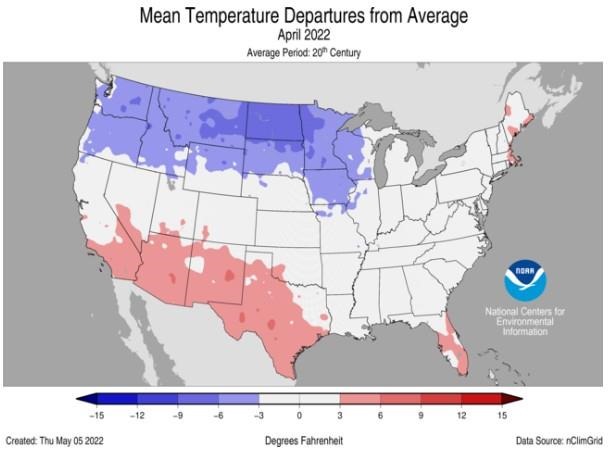Area-based crop insurance is based on county-level yields and revenue. Area-based PRF insurance is based on a grid. The grids used by RMA are defined as 0.25 latitude by 0.25 longitude. For a PRF policy, a producer chooses the grid corresponding to the location of the acreage they want to insure. If a producer’s farm is in more than one grid, the producer can select either grid. For example, I have provided the grid information for the University of Arkansas Livestock and Forestry Research Station in Batesville, Arkansas (see figure below). Using RMA’s PRF Support Tool, producers can enter an address or drop a pin to find their grid.

Using past precipitation data for the four closest National Oceanic Atmospheric Administration weather stations, historical index values are calculated for eleven 2-month index intervals for each grid: Jan/Feb, Feb/Mar, Mar/Apr, Apr/May, May/Jun, Jun/Jul, Jul/Aug, Aug/Sep, Sep/Oct, Oct/Nov, and Nov/Dec. For each 2-month interval, historical index values represent average precipitation for a specific grid. Rainfall index values are calculated for each interval and grid using the same four closest weather stations. The rainfall index values reflect current precipitation compared to the long-term average. Based on a chosen coverage level, the current year’s rainfall index values are compared to the historical index to determine whether a producer is paid an indemnity. A indemnity is paid when a rainfall index value is below a chosen coverage level and historical average precipitation.
There are several decisions to consider for interested producers that will impact a PRF policy. These decisions include intended use, insured acres, irrigation/organic practices, coverage level, productivity factor, 2-month index intervals, and percent of value. These decisions will impact the premiums producers have to pay for a policy and the likelihood of receiving an indemnity payment. I will review each of these decisions in another CMN article. Just know that there are several factors to consider, and decisions should be made with forage risk management in mind.
As we progress through the hay season, we will better understand our forage situation. Compared to other parts of the country, the Southeast is currently in a better situation with pastureland. As we know, that could quickly change. Begin thinking through your forage and drought management plan. Depending on that situation, PRF insurance is a product that produces might consider for the upcoming year. USDA-RMA’s decision aid allows producers to see how certain decisions impact the specifics of a PRF policy.
This material is based upon work supported by USDA/NIFA under Award Number 2021-70027-34722.
Source : osu.edu